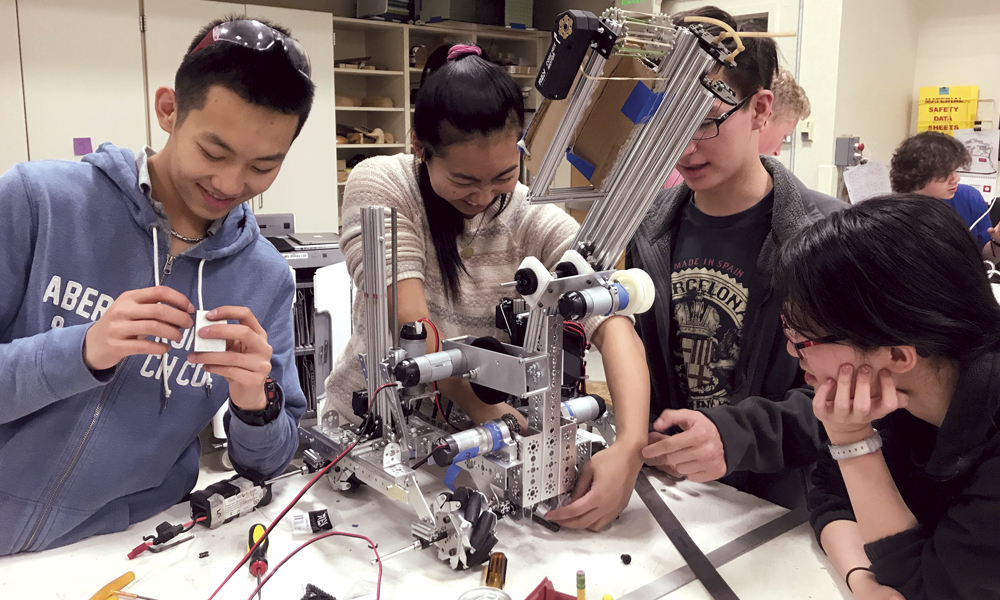Raising a Ruckus
The Wright Angle celebrates 10 years of team robotics at CWA
By Jim Albers
The Wright Angle robotics team really seems to be raising a ruckus, because this year’s FIRST Challenge is titled “Rover Ruckus,” and that is exactly what they have been doing. In its 10th year as a CWA team, students have been busy designing, building, programming, and reaching out to other teams via media relations.
Led by Joe Sparano and me, robotics is not a class in which students focus only on a specific subject. STEM (or STEAM) is an educational approach in which students (and even adults) are immersed in learning that incorporates science, technology, engineering, art, and math (art is the “A” for STEAM that would include design). Robotics is a STE(A)M-based program that incorporates all of these real-world applications in order to successfully compete in the tournaments.
Everyone in robotics is a part of STE(A)M, which is very fluid, meaning that they are not “set” into one specific area of the team. Computer design members will work with engineering; engineering will work with programming; programming will work with engineering and design; media and technology works with design, engineering, programming, notebook, etc. Every year the game changes and varies on the amount of design, building, and programming sophistication.
At the start of each school year, FIRST Robotics hosts its annual kickoff at schools all around the country—and even internationally. The kickoff marks the unveiling of the new season’s challenge. Once the new game is revealed, each team will analyze the game and begin the process of creating a robot that will score the most points.
The season is marked by three competitions. The first two are league meets, which allow local teams the chance to compete against other teams to see how their robot performs and to make adjustments. The third competition is the Interleague Championship, which brings together approximately 32 divisional teams from the Seattle-Tacoma area. Based upon accrued league points and how well they perform at the championship, eight teams from this division qualify for state at the ShoWare Center in February. CWA’s the Wright Angle team took fifth out of 13 teams in the first competition and third out of 13 teams
in the second competition. Going into the Interleague Championship, CWA was ranked eighth out of 33 teams. The past two years the Interleague Championship has been held at the new Amazon Doppler building in Seattle. This, in itself, is an added bonus for the students’ experience.
This year’s competition centered on a lunar landing theme. Participating teams had to design and build a robot that could lower itself from the lander onto the play field, and then drive back and forth from a crater collecting minerals (balls and cubes) to place in the lander. Within the final 30 seconds of the game, teams could earn a final 50 points by lifting their robot back onto the lander. Needless to say, each year brings its own unique challenges to the robotics team. For example, we experienced mechanical issues in key competitions this year that limited us in our scoring. Despite these setbacks, our students rose to the challenge, brought their background knowledge, learning, problem-solving skills, and communication skills to design a robot that competitively participated in several challenges this year. Go Wright Angles! //

